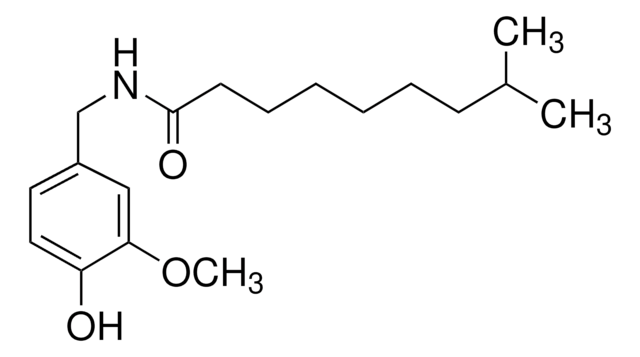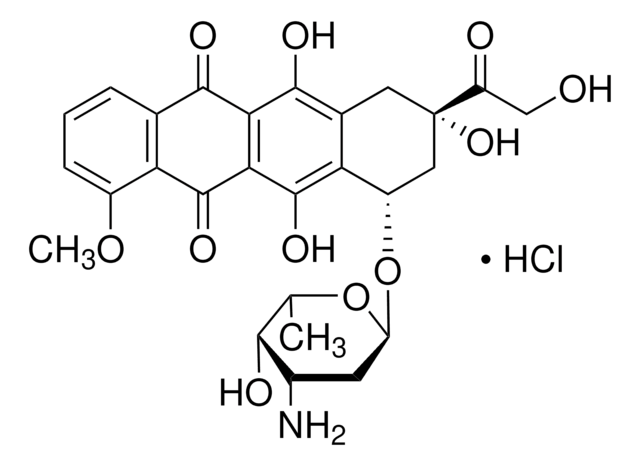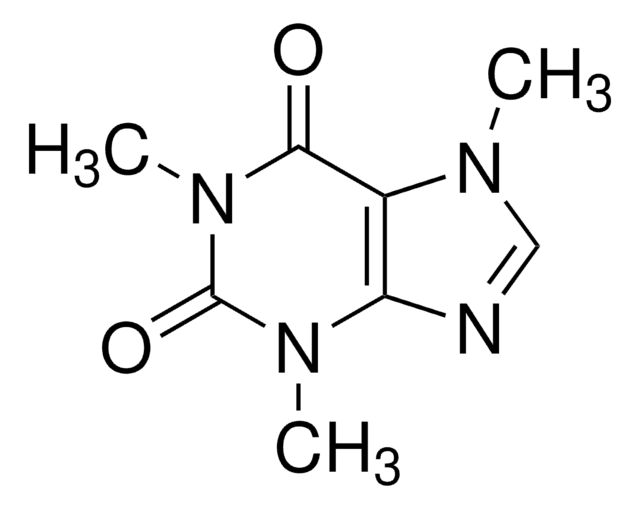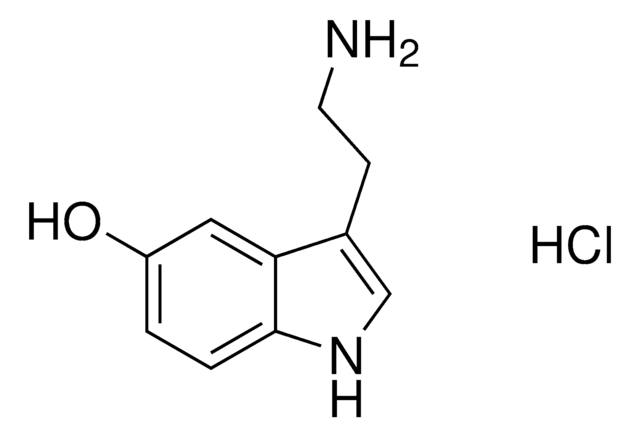推荐产品
产品名称
辣椒素, ≥95%, from Capsicum sp.
生物来源
Capsicum sp.
质量水平
方案
≥95%
mp
62-65 °C (lit.)
溶解性
H2O: insoluble
ethanol: soluble
储存温度
2-8°C
SMILES字符串
COc1cc(CNC(=O)CCCC\C=C\C(C)C)ccc1O
InChI
1S/C18H27NO3/c1-14(2)8-6-4-5-7-9-18(21)19-13-15-10-11-16(20)17(12-15)22-3/h6,8,10-12,14,20H,4-5,7,9,13H2,1-3H3,(H,19,21)/b8-6+
InChI key
YKPUWZUDDOIDPM-SOFGYWHQSA-N
基因信息
human ... CYP1A2(1544) , TRPV1(7442)
rat ... Trpv1(83810) , Trpv4(66026)
正在寻找类似产品? 访问 产品对比指南
一般描述
应用
- 研究其对与突触可塑性相关的染色质重塑和基因表达的影响
- 研究H2C1细胞(表达TRPV1通道的人胚肾293细胞)中的TRPV1通道信号
生化/生理作用
警示用语:
Danger
危险分类
Acute Tox. 2 Oral - Eye Dam. 1 - Resp. Sens. 1 - Skin Irrit. 2 - Skin Sens. 1 - STOT SE 3
靶器官
Respiratory system
储存分类代码
6.1A - Combustible acute toxic Cat. 1 and 2 / very toxic hazardous materials
WGK
WGK 3
闪点(°F)
235.4 °F - closed cup
闪点(°C)
113 °C - closed cup
个人防护装备
Eyeshields, Faceshields, Gloves, type P2 (EN 143) respirator cartridges
法规信息
Which document(s) contains shelf-life or expiration date information for a given product?
If available for a given product, the recommended re-test date or the expiration date can be found on the Certificate of Analysis.
How do I get lot-specific information or a Certificate of Analysis?
The lot specific COA document can be found by entering the lot number above under the "Documents" section.
How do I find price and availability?
There are several ways to find pricing and availability for our products. Once you log onto our website, you will find the price and availability displayed on the product detail page. You can contact any of our Customer Sales and Service offices to receive a quote. USA customers: 1-800-325-3010 or view local office numbers.
What is the Department of Transportation shipping information for this product?
Transportation information can be found in Section 14 of the product's (M)SDS.To access the shipping information for this material, use the link on the product detail page for the product.
My question is not addressed here, how can I contact Technical Service for assistance?
Ask a Scientist here.
我们的科学家团队拥有各种研究领域经验,包括生命科学、材料科学、化学合成、色谱、分析及许多其他领域.
联系技术服务部门








